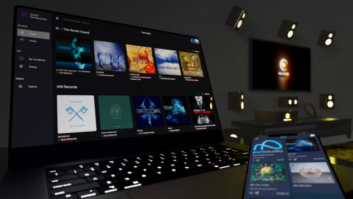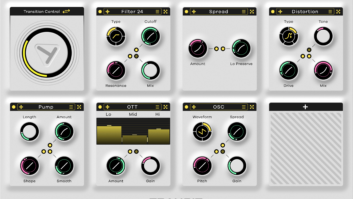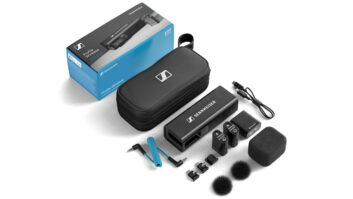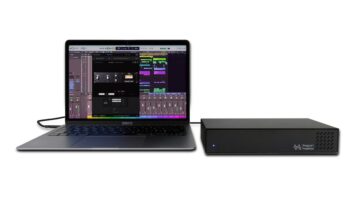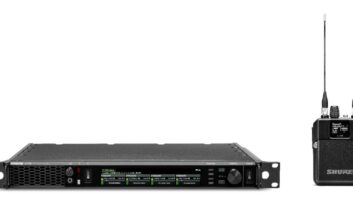SEATTLE, WA / BERLIN, GERMANY—With the emergence of new audio tools from Auro Technologies, Dolby Laboratories and others in recent years, artists working in surround sound now have an opportunity to take their mixes to a whole other level—literally, by adding an overhead layer. David Miles Huber, an electronic music artist who has been nominated for four Grammy Awards for his work in surround, was quick to see the possibilities of the new immersive formats, and in May released GAMmA, natively mixed in 9.1-channel Auro-3D.
The new album is available on Blu-ray Disk through the Auro-3D Creative Label, as is Huber’s 2015 full-length, Parallax Eden, which was the label’s first release. GAMmA, described as “the expression of light and color through the medium of music,” includes multiple high-resolution mix versions, including “Stereo: The Berlin Remixes,” “Stereo: The Chill Mixes,” “5.1 Surround Version: The Berlin Remixes” and “9.1 Auro-3D: The Original Mixes.”
As Huber explains, this release may be unique, as these are not alternate mixes of the same basic elements, but rather distinct versions produced for the specific playback format. “I have a basic layer foundation, a chill layer, then another layer above that steps it up a little. Then I take the production to Berlin and make it into a dance mix, stepping it up even more,” he says.
“It’s like four albums on the same disk. That really sets it apart and makes it fun.”
Huber laid down the foundational GAMmA chill mixes at his personal studio in Seattle, WA, which is outfitted with a Steinberg Nuendo DAW, Universal Audio interface, Steven Slate Raven touch screen controller and PMC speakers. These compositions are often at around 51 beats per minute, the average resting heart rate, enshrined in the name of his own label, 51bpm.com.
The Berlin mixes, produced in Seattle or at his apartment in Berlin, where Huber spends half his time, added dance elements via Ableton Live, structured so that they may be triggered onstage in the clubs or in-studio. These elements were then combined in a live performance at Hotel nhow, which houses an SSL Duality-equipped music studio perched high above the Spree River in Berlin.
Huber next took those mixes to Seattle’s London Bridge Studios, where he added John Ewing’s live acoustic drums and other tracks through the iconic Neve 8048 desk. In the final stage of the production process, he flew to Galaxy Studios in Mol, Belgium to mix the 5.1 and 9.1 versions alongside engineer Emiliano Caballero and master the entire project. Wilfried Van Baelen, inventor of the Auro-3D format and CEO of Auro Technologies, co-founded Galaxy with his younger brother, Guy.
“I never believed in mastering as a two-stage process,” Huber says. “Am I a mastering engineer? Absolutely not. Have I taken two and a half years to learn how to master my own stuff? Absolutely.”
Mastering from the multitrack session, Huber can make any necessary tweaks without compromising the overall track, he says. “You can do the in and out timings, the levels, all the processing.”
But, he stresses, “The one thing to let readers know is, do not take the mastering process lightly. This is a long process.”
On any project, says Huber, “We always record everything in stereo. With any instrument, even a voice through an X/Y mic, you get this spread, this breadth and width.” A typical project might include as many as 80 stereo tracks, he reports.
He does not take a conventional approach: “I did one thing that I’ve never heard anybody do—I had the kick drum in the rear and had a delay answer in the center. There are no rules.”
Even though there is a panner in the software, he says, for the 9.1 mixes, “I set up a 5.1 bus and a 4.0 bus. I send those things that I want to go to the height channels, and those to the 5.1; it becomes quite a simple process.”
He adds, “There might be an auto-panner, but I don’t use panning for effect. I never have; I consider it gimmicky.”
Huber utilized PMC speakers at nearly every stage of the process, beginning with the 5.1 PMC AML2 set-up at his Seattle studio. The main Auro-3D 9.1 mix room at Galaxy Studios is equipped with PMC IB1S LCR speakers with twotwo.6 speakers for the rear channels and twotwo.5 speakers for the overhead channels.
“When I was in my 20s, I had a pair of Chartwell LS3/5A speakers, which were so far ahead of their time,” he recalls. “I loved those speakers. Then I found out about PMC, and that British sound I dearly love. One day, I was at a party at Capitol Studos and discovered that Peter Thomas, the founder of PMC, designed the LS3/5A. Suddenly it all made perfect sense.”
But rather than dwelling on the past, Huber is jazzed by the possibilities of an immersive future. “It’s so exciting,” he says. “I’m 63, and I’ve always been forward-thinking. I’m not one to look back.”
Auro Technologies
auro-3d.com
